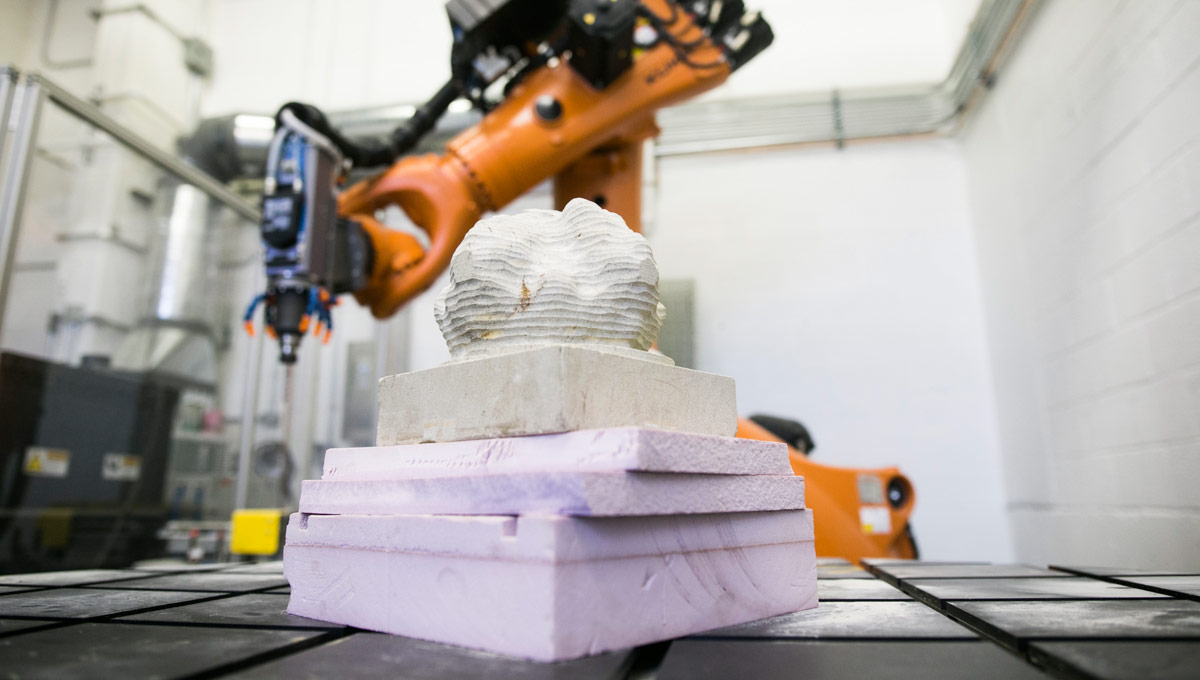
KUKA Robotics in Architecture
A Leap Forward for Heritage Conservation: Carleton’s Robots are Carving History
An Excerpt of the Story from the Carleton Newsroom
Although the tools they use have evolved over the years, architects have always designed and built physical structures and objects. 
A pair of jointed-arm industrial robots recently acquired by the Carleton Immersive Media Studio (CIMS) represent the latest leap forward.
Roughly three metres high when fully extended, the Kuka KR 360 and a desk-sized KR 6 are housed in a customized room in Carleton’s Architecture Building. Kuka is the manufacturer and the numbers refer to the payload (in kilograms) each machine is capable of handling.
Purchased with support from Public Services and Procurement Canada (PSPC) and the Social Sciences and Humanities Research Council (SSHRC), the robots will help CIMS and its collaborators in the federal government continue their cutting-edge work in the rapidly advancing world of digitally-assisted fabrication.
“We’re the only university in Canada with a setup of this kind,” says James Hayes, the Architecture PhD candidate helming the robot project, currently focused on the heritage conservation components of the major rehabilitation of Parliament Hill.
“The ability to actually craft and make artifacts is fundamental to an architectural education.”
 The CIMS team will use the robots to assist in creating sculptures and other architectural ornaments in a variety of materials — including stone and wood — from digital models obtained by laser scanning and photogrammetry, the science of using photographs to make precise measurements.
The CIMS team will use the robots to assist in creating sculptures and other architectural ornaments in a variety of materials — including stone and wood — from digital models obtained by laser scanning and photogrammetry, the science of using photographs to make precise measurements.
This technology has already been of use on Parliament Hill, where centuries-old sculptures are being replaced or restored as part of the renovations, and new decorative features are being crafted for the Government Conference Centre, which will serve as a temporary home for the Senate when the decade-long Centre Block restoration begins next year.
And because human hands will continue to play a role in this process, from operating the robots to the fine-detail finishing work on a sculpture before installation, some people in traditional fields such as stone masonry don’t see the robots as a threat to their employment.
Read More on the Carleton Newsroom Website
Learn More About KUKA.Sim, an Easy Way to Get Started with KUKA
